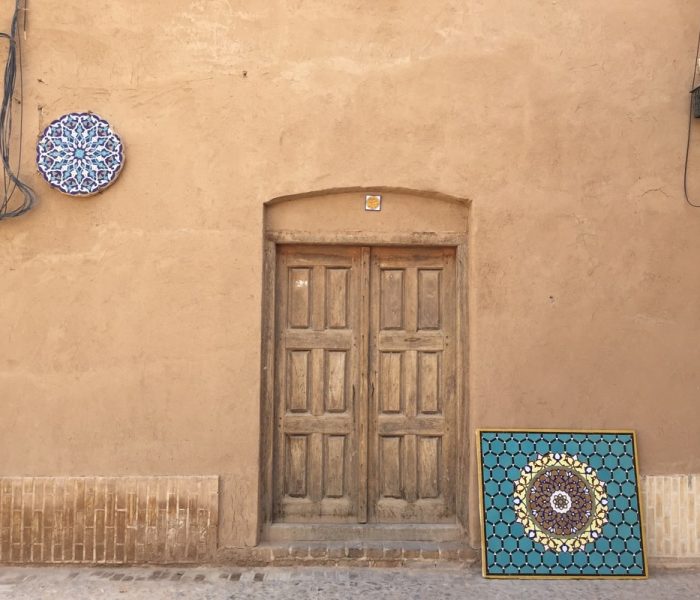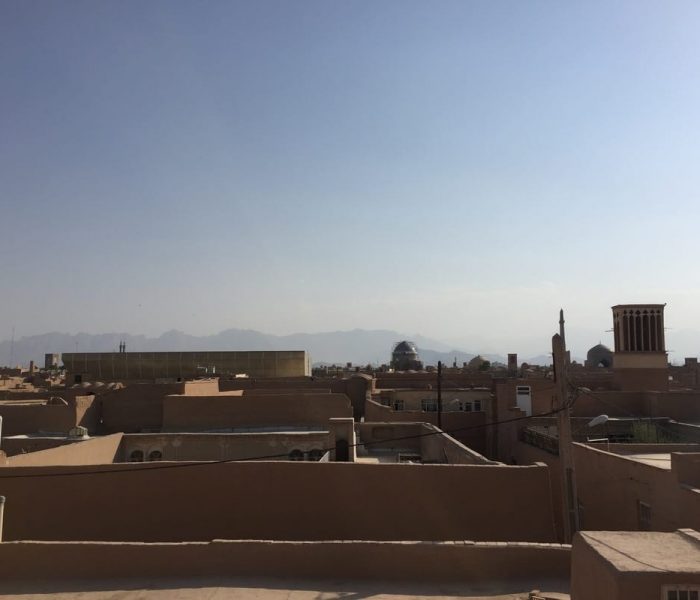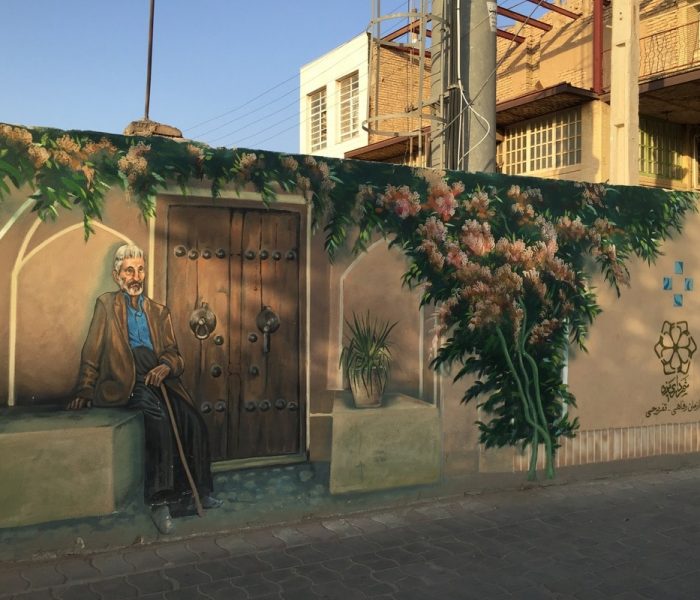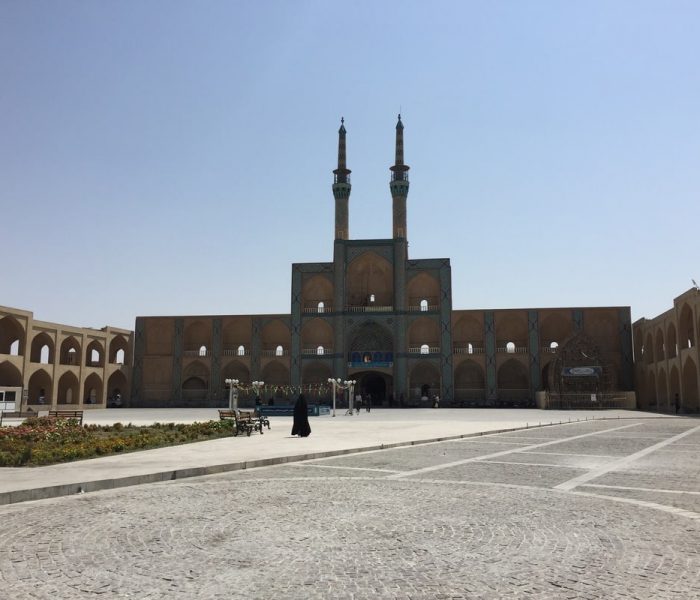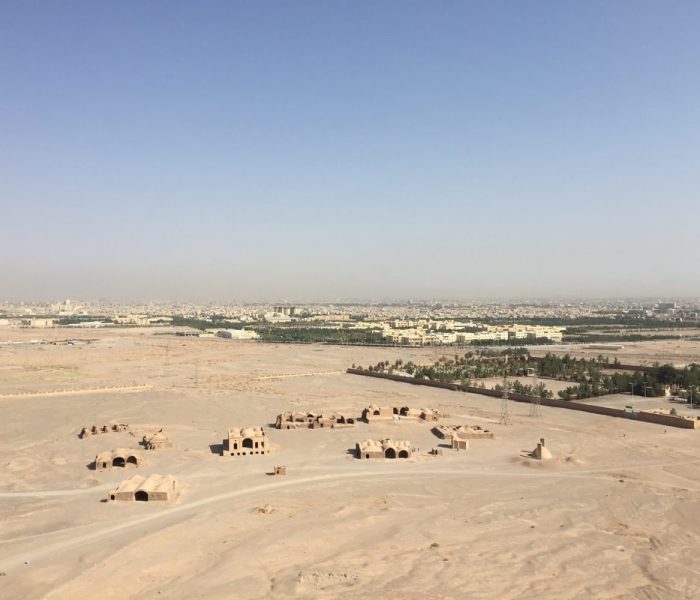If travel is most rewarding when it surprises, then Iran might just be the most rewarding destination on Earth. If you fancy travelling somewhere neither East nor West, and exotic and fascinating yet perfectly comfortable, read on… Andrew Burke, Lonely Planet Writer
Do you have a list of top 10 places you desperately want to visit?
Most of us probably do: due to our natural curiosity, we crave for adventures, discovering the world around us, broadening our horizons, and challenging our spirits. Sometimes this list would include Italy or France – to taste real Neapolitan pizza or take a picture in front of the Eiffel Tower. Others dream of Bolivia or Peru – to see the great salt flats and climb the stairs of Machu Picchu.
One of the countries on my top 10 list was Iran – and for a good reason, as it turned out. This country truly breaks all stereotypes, opening its doors and yet staying mysterious and magical.
So, why go to Iran?
We were asked this question a hundred times: when we told our families and friends we were planning to go, at the customs when leaving St. Petersburg and upon our return to the homeland. Apparently, this country is not seen as safe nor worth visiting, and we were happy to prove both statements wrong. Here’s my personal list of top 5 experiences for when in Iran (hope this country makes it to your top 10 must-go places, too!)
1. Yazd
With its mud-brick old town, narrow streets and an excellent range of sights to see, Yazd is a gem of any trip to Iran.
According to Unesco, Yazd is one of the oldest towns on earth. Because of its remote location in the desert, Yazd stayed immune to the large battles and wars that shook the region. In the 13th century, it was visited by Marco Polo, who remarked on the city’s fine silk-weaving industry. When passing this way, he described Yazd as ‘a very fine and splendid city and a center of commerce’.
Marco Polo was right indeed. Today Yazd is a perfect spot to start getting acquainted with the region’s history. Its old town is almost entirely made of sun-dried mud bricks. The city emerges from the desert like a mirage, with only badgirs (that naturally turned to bad girls in our naming:) and minarets dominating its landscape. The streets in the old town might feel deserted because of the high walls that are supposed to shield the interior from the street views. In addition, when we were there, the temperature hit sweltering 40 C/104 F, so people were just mostly hiding inside. So much for relaxed sightseeing 🙈
When the temperatures hit records, the best time to explore the city is either early morning or late afternoon. During the day, you might want to sip tea in traditional houses with a garden and a pool inside (Kohan, Fahadan, or Silk Road hotels might be a good option).
Yazd is also the birthplace of zoroastrianism, one of the world’s oldest religions, which used to be Iran’s primary religion prior to Islam. Even though there are only 200 Zoroastrians left in the whole of Yazd, the city has a couple of peculiar Zoroastrians sighs – the Fire Temple (Ateshkadeh) and Towers of Silence (Dakhmeh-ye Zartoshtiyun). I’ve never been to a Zoroastrian temple before: it looks pretty simple inside, with a flame that is said to have been burning since AD 470. As for the Towers of Silence, their history is more exciting. They are set on two hilltops in the outskirts of Yazd; back in the past, people would bring their dead to these towers and leave them for the vultures. The modern Zoroastrian cemetery is nearby.
Once you have finished exploring Yazdi mud-brick streets, head on to a day trip around the city. A popular route includes Kharanaq (a deserted village about 70km north of Yazd that is believed to be more than 1000 years old), Chak Chak (Iran’s most important Zoroastrian pilgrimage site), and Meybod (another mud-brick town that is at least 1800 years old). It takes the whole day to see all three places, so plan ahead.
2. Esfahan
Esfahan is Iran’s #1 tourist destination – and for good reason! The city is grandeur: with its historic bazaar, picturesque bridges, magnificent squares and stunning mosques. Most attractions are within the walking distance from the main street Chahar Bagh, a nice shadowy boulevard that is great for strolling and window-shopping in the afternoon. Esfahan is home to a great number of beatiful mosques – Masjed-e Jameh, Masjed-e Shah, Masjed-e Sheih Lotfollah, to name a few. It is a unique pleasure to discover each one of them, sit for a while, stay for the evening prayer and see Islam in action.
When you have finished examining fine interiors and elegant decorations of the mosques (some of which date back to the 12th century!), dive into the bustling world of Bazar-e Bozorg (the Great Bazaar).
To be frank, Iranian bazaars were a bit of a disappointment to me. I don’t know what I was expecting to find there but definitely not piles of jeans, kitchenwear and toys. This can easily be explained by the fact that there are still very few tourists in Iran, and bazaars are, well, what they are supposed to be – a place for the locals to buy stuff like clothes. However, Esfahani Great bazaar was different. It is one of Iran’s most historic and fascinating bazaars, and its oldest parts are over a thousand years old. Each industry occupies its own section, and the most picturesque was, naturally, the carpet sellers. This is where I thought – for the tenth time! – how intelligent the Iranians are. When they are trying to lure you into their shop, they don’t just attack you (like they normally would in Morocco or some other Arab countries). Instead, they genuinely want to get to know you. The conversation might go like this:
A carpet seller (CS): Good day, mister! (Of course, they never start talking to a woman). Where do you come from?
You: We are from Russia.
CS: Oh, Russia! Nice! One of my uncles studied Russian at the university (there might be some variations, like: One of my friends went to Russia, I just met another person from Russia, etc.) How do you like Iran?
You: We like it very much, thank you.
CS: I am very glad to hear that! I have a small carpet shop, would you like to come inside for a cup of tea? You don’t need to buy, just see!
And the conversation goes on, as if you were old friends. We felt very bad for turning them down but we could not possibly visit all the carpet shops we were invited to. The carpets are beautiful indeed, though. No wonder Esfahan is so well-known for its carpet industry.
Another great way to explore Esfahan is to stroll along the Zayandeh River and cross its historic bridges. Well, technically, Zayandeh is not a river anymore, since normally it requires to actually have water in order to be called a river. Zayandeh, on the other hand…
Nevertheless, the bridges are definitely worth checking out. The most picturesque ones are Pol-e Si-o-Seh, Pol-e Chubi and Pol-e Khaju.
3. Homestays with locals
One of the best ways to experience the Iranian life from the inside is to book a night or two at one of the traditional guesthouses run by Iranian families. We had a pleasure of staying at one of such guesthouses called Tak-Taku in a small village of Toudeshk on our way from Yazd to Esfahan.
Tak-Taku is run by Mohammad Jalali and his family, and they managed to make our stay as special as it could possibly be. Mohammad is an attraction himself: you could never imagine you would find a man so open-minded and smart – in a small Iranian village! As one of the guests noted, Mohammad really put Toudeshk on the map of Iran: if it wasn’t for Mohammad’s guesthouse, nobody would ever know this place existed.
The house has rooms set around a courtyard. Guests eat together with the family; all food is prepared by Mohammad’s mother, and I swear this was the most delicious food I ate in Iran. Mohammad also took us around the village, telling stories and letting us peep into Iranian way of life. He even took us pigeon-hunting into the desert (although I didn’t enjoy the procedure that much).
We also visited the nearby Salt Lake and watched the sunset in the desert. Mohammad’s family made us feel like we were family members, even though we could hardly communicate due to the language barrier. His Dad kept telling us the names of Russian vehicles, like “Izh” (a motorcycle) or “Lada” (an automobile), and his Mom hugged and kissed me warmly upon our departure.
The stay at Tak-Taku was definitely one of the highlights of our trip to Iran!
4. Meeting the people
Iranian people turned out to be one of the greatest treasures and surprises of our trip. They are warm, charming, and endlessly curious towards tourists. They are genuinely happy to welcome foreigners in their country, and they will keep reminding you about this during your whole stay. You will hear “Welcome to Iran!” all over place, and even if they don’t know how to say it in English, they will just smile at you warmly.

You can’t grasp the extent of their generosity, either. In Yazd, we ran into a traditional bakery where they make bread in tandoor. I wanted to take a picture of the process and asked the baker for the permission. Not only was I allowed to take a picture but he also gave us some freshly baked bread – for free! Just because.
Another time, we were riding the subway in Tehran, carrying our backpacks. It was around 8AM, and the train was full with people getting to work. They were so kind that they let us both sit down – my husband and me.
Or that other time when we were flying from Esfahan to Tehran, and the man just took our backpacks down for us, without us even asking him to do this!
People would come to your table at a restaurant just to make sure you were doing fine. The waiter didn’t speak much English, and other guests wanted to help us out in case we were struggling with the menu.
I can go on and on about how truly, genuinely touched I was by Iranian people and their attitude towards foreigners – guests of their country. I just wish this doesn’t change if/when the country gets flooded by tourists in a couple of years.
5. Jogging in Iran
One of the interesting experiences I had in Iran was jogging there. See, I am getting ready for half-marathon, and I didn’t want to miss training. So, both my husband and I took our training clothes with us and prepared for…
Actually, I don’t know what I was expecting jogging in Iran to be like. Prior to departure, I read several articles on how women sports are supressed and how ladies can maybe only train in the women-only gyms. I was expecting people to stare and yell at me and cat-call me and do all the other weird and unpleasant things to me, should I decide to go jogging in the streets of Iran.
Luckily, I couldn’t be further from truth. During those several times when we went jogging (I did go with my husband, just in case), no one ever said anything to us, let alone yelled or pointed fingers. In fact, I don’t even think they looked at us that much, even though we went jogging in the small village of Toudeshk, with the population hardly over 3,000 people.
I did have to cover up completely: no hair and no bare legs showing, but this wasn’t too difficult. The only inconvenience we experienced was the heat: we had to wake up at 6AM in order not to die from heart attack but that was about it. Now I can proudly say that I ran Iran!👟
Iran was probably one of the best trips I’ve ever gone on, and definitely the richest in terms of stereotypes broken. In his New-York Times bestseller “Three Cups of Tea” Greg Mortenson says it takes three cups of tea to become family with a Balti. Even though Mortenson speaks of a different country, I can assure you this rule applies to Iran, too. And with so much tea we drank there, Iran is definitely part of us now. For good.
